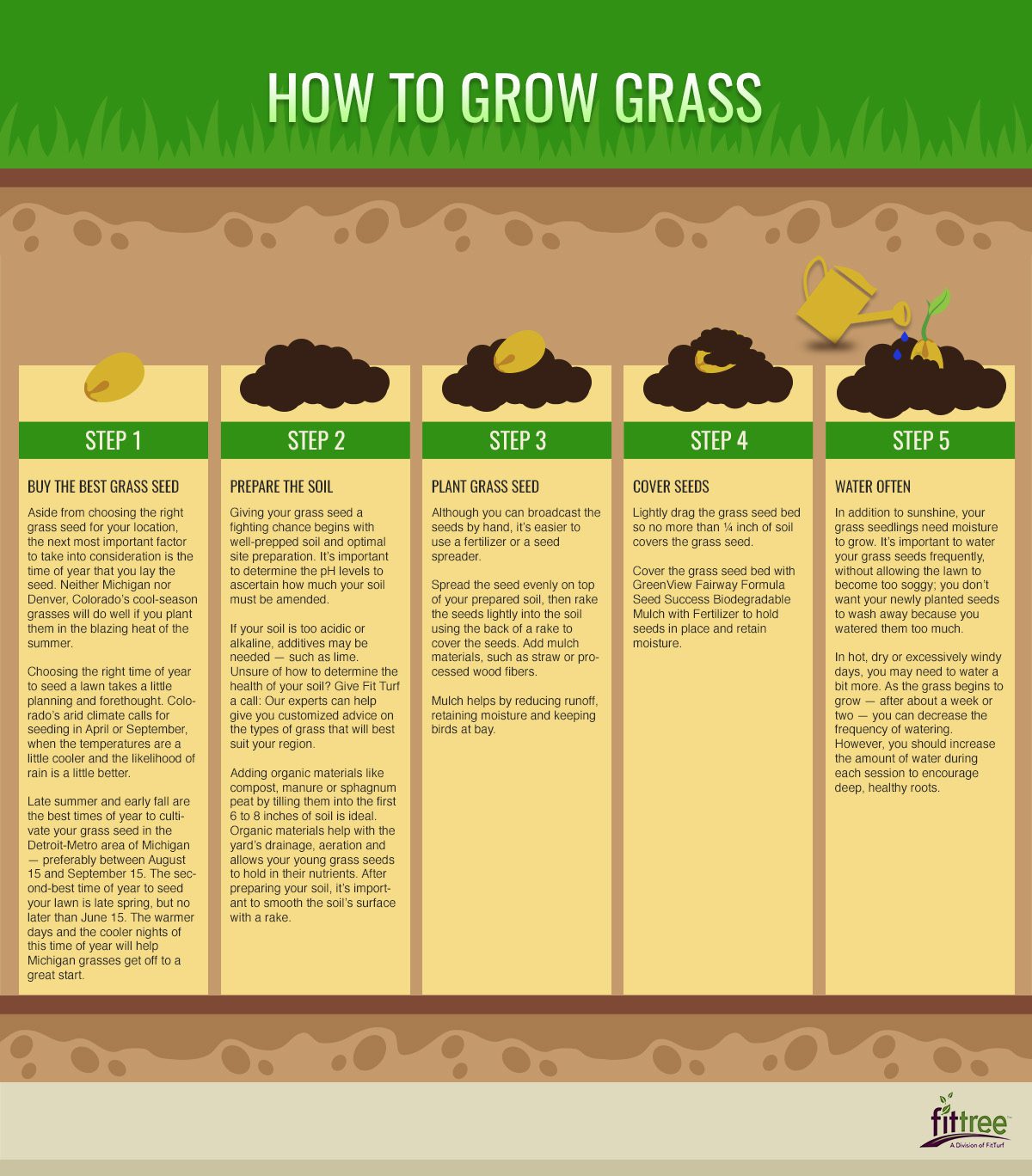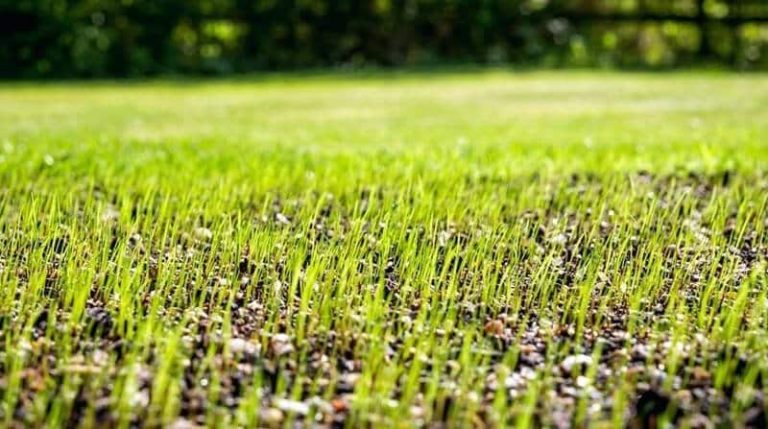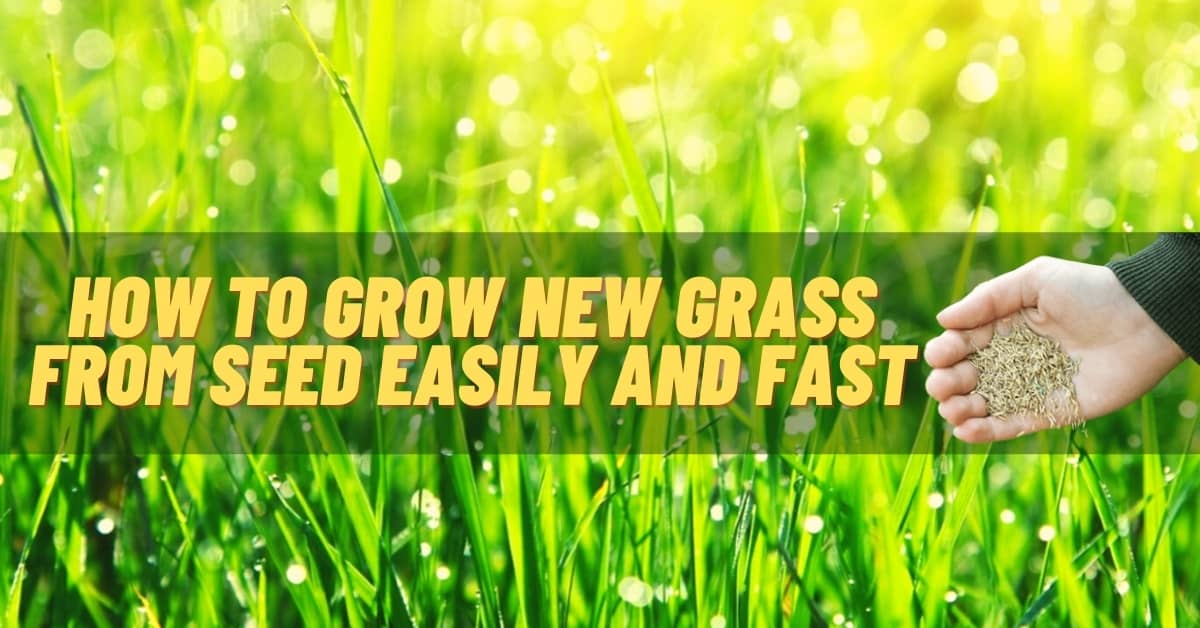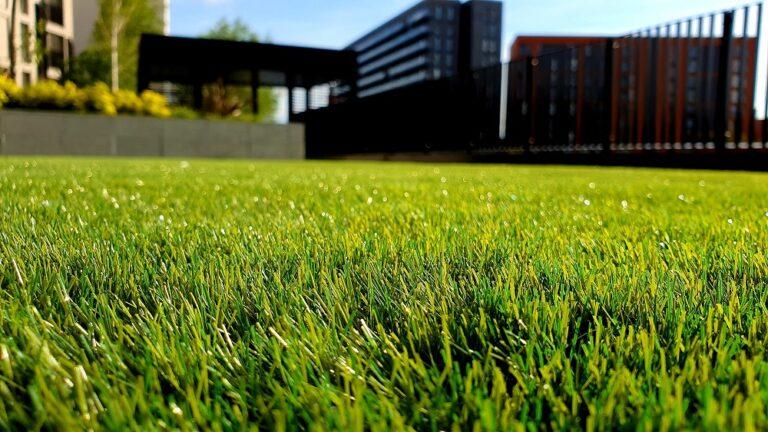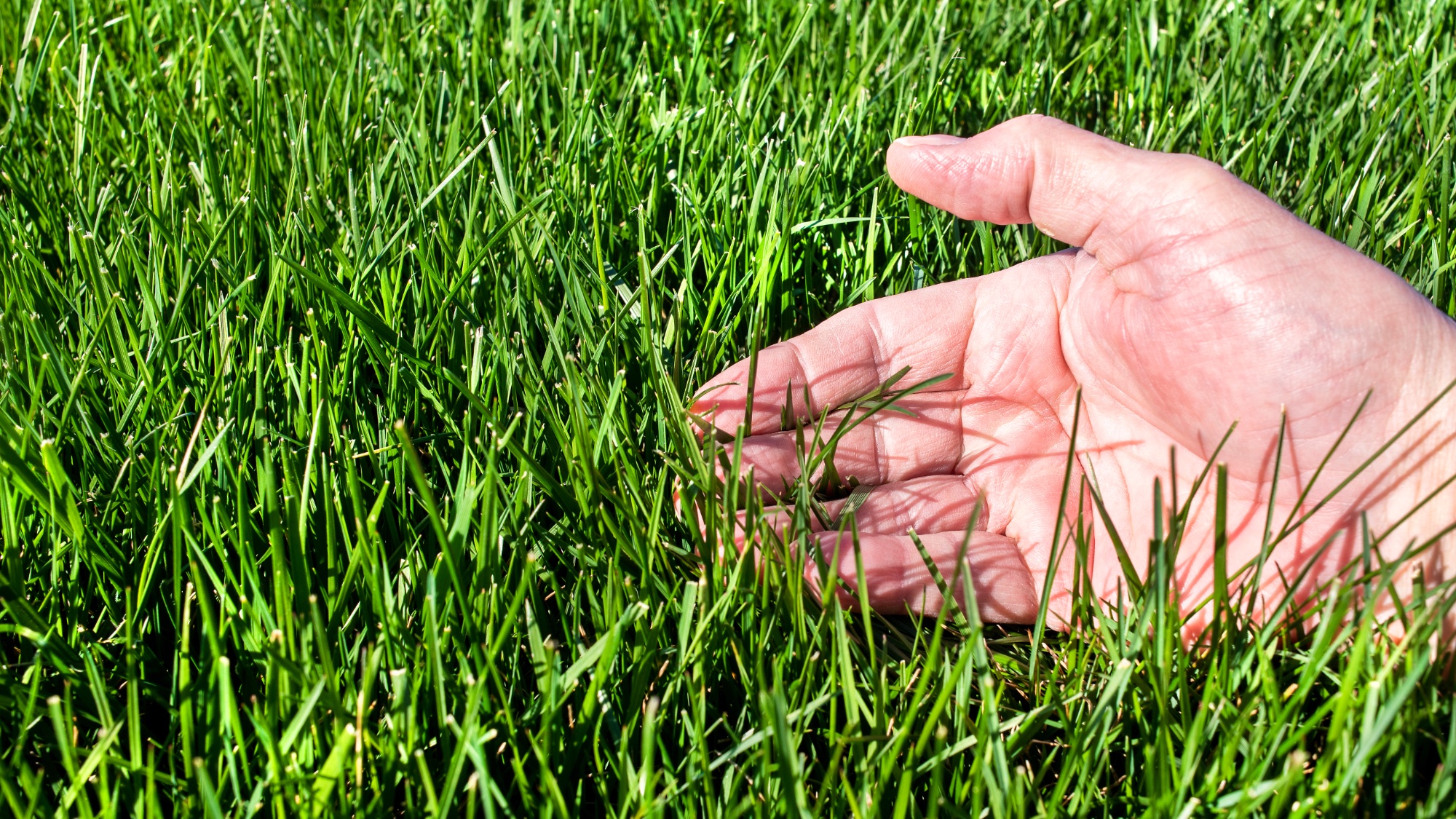Understanding the Grass Seed Germination Process
Grass seed germination is a complex process that involves the activation of dormant seeds, leading to the growth of new seedlings. The germination process is influenced by various factors, including soil temperature, moisture, and light. For optimal germination, it is essential to choose high-quality grass seed that is suitable for your specific climate and soil type.
Soil temperature plays a crucial role in grass seed germination. Different types of grass seeds have optimal temperature ranges for germination. For example, cool-season grasses such as Kentucky bluegrass and perennial ryegrass germinate best in temperatures between 40°F and 75°F (4°C and 24°C), while warm-season grasses like Bermudagrass and zoysiagrass prefer temperatures above 75°F (24°C).
Moisture is another critical factor in grass seed germination. Seeds need consistent moisture to germinate, but excessive water can lead to rot and poor germination. It is essential to maintain a balance between moisture and aeration to promote healthy seedling growth.
Light also affects grass seed germination. While some grass seeds can germinate in complete darkness, most require some light to initiate the germination process. However, excessive light can inhibit germination, so it is essential to provide the right amount of light for optimal growth.
When selecting grass seed, it is crucial to consider the specific needs of your lawn. Factors such as climate, soil type, and intended use should influence your decision. By choosing high-quality grass seed that is suitable for your specific conditions, you can ensure optimal germination and establishment of your lawn.
Understanding the grass seed germination process is essential for growing a healthy and thriving lawn. By recognizing the factors that influence germination, you can take steps to optimize the growth of your new seedlings. This knowledge will help you to better care for your lawn and address any challenges that may arise during the germination process.
Preparing the Soil for Optimal Grass Growth
Before sowing grass seed, it is essential to prepare the soil to create an optimal growing environment. This involves removing debris, loosening the soil, and applying fertilizers or soil conditioners. A well-prepared soil will help to promote healthy seedling growth and increase the chances of successful germination.
Start by removing any debris, such as rocks, twigs, and weeds, from the soil surface. This will help to prevent competition for water and nutrients and create a smooth surface for sowing the grass seed. Next, loosen the soil to a depth of about 8-10 inches using a garden fork or tiller. This will help to break up any clods and compacted soil, allowing the roots of the new seedlings to grow deeper.
Once the soil is loosened, apply a starter fertilizer to promote healthy seedling growth. A starter fertilizer is a type of fertilizer that is specifically designed for new seedlings and contains a balanced mix of nitrogen, phosphorus, and potassium. This will help to provide the necessary nutrients for the seedlings to grow and develop.
Soil conditioners, such as compost or well-rotted manure, can also be applied to the soil to improve its structure and fertility. These conditioners will help to improve the soil’s water-holding capacity, aeration, and nutrient availability, creating a more favorable environment for the new seedlings to grow.
It is also essential to check the pH level of the soil and adjust it if necessary. Most grass types prefer a slightly acidic to neutral soil pH, ranging from 6.0 to 7.0. If the soil pH is too high or too low, it can affect the availability of nutrients and impact the growth of the new seedlings.
By preparing the soil properly, you can create an optimal growing environment for your new grass seedlings. This will help to promote healthy growth, increase the chances of successful germination, and reduce the risk of common problems such as poor growth, thinning, or weed infestations.
How Long Does Grass Seed Take to Germinate?
The germination period for grass seed can vary depending on several factors, including the type of grass, weather conditions, and soil quality. Generally, grass seed can take anywhere from 7 to 30 days to germinate, with most types of grass seed germinating within 14 to 21 days.
Cool-season grasses, such as Kentucky bluegrass, perennial ryegrass, and tall fescue, typically germinate faster than warm-season grasses, such as Bermudagrass and zoysiagrass. Cool-season grasses can germinate in as little as 7 to 10 days, while warm-season grasses may take 14 to 21 days or longer to germinate.
Weather conditions, such as temperature, moisture, and light, can also impact the germination period. Optimal temperatures for germination vary depending on the type of grass, but most grasses prefer temperatures between 60°F and 90°F (15°C and 32°C). Adequate moisture and light are also essential for germination, and a lack of either can delay or prevent germination.
Soil quality can also affect the germination period. Well-draining, fertile soil with a pH between 6.0 and 7.0 can promote healthy germination, while poor soil quality can lead to delayed or poor germination.
It’s essential to note that the germination period is just the beginning of the growth process. After germination, the seedlings will need time to establish themselves, and this can take several weeks to several months, depending on the type of grass and growing conditions.
Understanding the germination period and the factors that affect it can help you to better plan and care for your lawn. By providing optimal growing conditions and choosing the right type of grass for your climate and soil type, you can promote healthy germination and establishment of your lawn.
Factors Affecting Grass Seed Growth and Establishment
After germination, grass seedlings require optimal growing conditions to establish themselves and grow into a healthy lawn. Several factors can impact grass seed growth and establishment, including temperature, moisture, light, and competition from weeds.
Temperature is a critical factor in grass seed growth and establishment. Most grass types prefer temperatures between 60°F and 90°F (15°C and 32°C) for optimal growth. Temperatures above or below this range can slow down or even stop growth.
Moisture is also essential for grass seed growth and establishment. Adequate water supply is necessary for seedlings to develop a strong root system and grow into a healthy lawn. However, overwatering can lead to shallow roots and increased susceptibility to disease and pests.
Light is another important factor in grass seed growth and establishment. Most grass types require at least 6 hours of direct sunlight per day to grow and thrive. However, some grass types, such as shade-tolerant grasses, can grow well in partial shade.
Competition from weeds can also impact grass seed growth and establishment. Weeds can compete with grass seedlings for water, nutrients, and light, leading to poor growth and establishment. Regular weeding and proper lawn care practices can help to minimize weed competition and promote healthy grass growth.
To maintain optimal growing conditions and control weeds, it’s essential to implement proper lawn care practices, such as regular mowing, watering, and fertilizing. Proper mowing techniques, such as maintaining a mowing height of 2.5-3 inches, can help to promote healthy growth and prevent weed competition.
Regular watering and fertilizing can also help to promote healthy growth and establishment. However, it’s essential to avoid overwatering and overfertilizing, as this can lead to shallow roots and increased susceptibility to disease and pests.
By understanding the factors that affect grass seed growth and establishment, you can take steps to create an optimal growing environment for your lawn. This will help to promote healthy growth, minimize weed competition, and ensure a beautiful and thriving lawn.
How to Care for Your Newly Seeded Lawn
Caring for your newly seeded lawn requires attention to detail and a commitment to providing optimal growing conditions. Proper mowing, watering, and fertilizing techniques can help to promote healthy growth and establishment of your lawn.
Mowing is an essential part of lawn care, and it’s crucial to use proper mowing techniques to avoid damaging your newly seeded lawn. Maintain a mowing height of 2.5-3 inches to promote healthy growth and prevent weed competition. Avoid mowing too frequently, as this can stress the grass and lead to disease and pests.
Watering is also critical for newly seeded lawns. Keep the soil consistently moist during the first few weeks after seeding, but avoid overwatering, which can lead to shallow roots and increased susceptibility to disease and pests. Water deeply but infrequently to encourage deep root growth and make your lawn more drought-resistant.
Fertilizing is another important aspect of lawn care. Apply a starter fertilizer at the time of seeding to promote healthy seedling growth. Follow up with a balanced fertilizer 4-6 weeks after seeding to provide essential nutrients for continued growth and establishment.
Proper care and maintenance can help to prevent common problems such as poor germination, thinning, or weed infestations. Regularly inspect your lawn for signs of disease or pests, and take action promptly to prevent the problem from spreading.
It’s also essential to be patient and not expect too much too soon. Growing a healthy and thriving lawn from seed takes time, and it’s normal for the lawn to look a bit patchy or uneven during the first few months. With proper care and maintenance, your lawn will eventually fill in and become a beautiful and lush oasis.
By following these tips and providing optimal growing conditions, you can help your newly seeded lawn to establish itself and grow into a healthy and thriving lawn. Remember to be patient, and don’t hesitate to seek advice from a lawn care professional if you have any questions or concerns.
Common Challenges and Solutions for Growing Grass from Seed
Despite proper care and maintenance, common challenges may arise when growing grass from seed. Poor germination, thinning, and weed infestations are some of the most common issues that can affect the health and appearance of your lawn.
Poor germination can be caused by a variety of factors, including inadequate soil preparation, insufficient watering, and poor seed quality. To overcome poor germination, ensure that the soil is properly prepared before seeding, and maintain consistent moisture levels during the germination period. Additionally, consider using a high-quality grass seed that is suitable for your climate and soil type.
Thinning can occur due to a lack of proper care and maintenance, such as inadequate watering, mowing, and fertilizing. To prevent thinning, maintain a regular mowing schedule, water deeply but infrequently, and fertilize regularly. Additionally, consider overseeding to fill in any bare spots and promote a denser, healthier lawn.
Weed infestations can be a significant problem when growing grass from seed. To prevent weeds, maintain a healthy and dense lawn through proper care and maintenance. Additionally, consider using a pre-emergent herbicide to prevent weeds from germinating in the first place.
Other common challenges that may arise when growing grass from seed include pests, diseases, and environmental stressors such as drought and extreme temperatures. To overcome these challenges, maintain a regular monitoring schedule to identify any potential issues early on, and take action promptly to prevent the problem from spreading.
By being aware of the common challenges that may arise when growing grass from seed, you can take steps to prevent them and ensure a healthy and thriving lawn. Remember to be patient, and don’t hesitate to seek advice from a lawn care professional if you have any questions or concerns.
Choosing the Right Grass Seed for Your Climate and Soil Type
Choosing the right grass seed for your specific climate and soil type is crucial for growing a healthy and thriving lawn. Different types of grass seed are suited for different climates and soil types, and selecting the right one can make all the difference in the success of your lawn.
Kentucky bluegrass, for example, is a popular choice for lawns in cooler climates with moderate temperatures and rainfall. It is a dark green, fine-textured grass that is known for its durability and resistance to disease.
Perennial ryegrass, on the other hand, is a fast-growing, fine-textured grass that is well-suited for lawns in temperate climates with moderate temperatures and rainfall. It is a popular choice for lawns that need to withstand heavy foot traffic or other forms of wear and tear.
Tall fescue is a deep-rooted, drought-tolerant grass that is well-suited for lawns in warmer climates with low rainfall. It is a popular choice for lawns that need to withstand extreme temperatures and drought conditions.
Other popular types of grass seed include Bermuda grass, zoysia grass, and buffalo grass. Each of these types of grass has its own unique characteristics and is suited for specific climates and soil types.
When selecting a grass seed, it’s essential to consider factors such as climate, soil type, and intended use. By choosing the right grass seed for your specific needs, you can create a healthy and thriving lawn that will provide years of enjoyment and beauty.
It’s also important to note that some grass seeds are more resistant to pests and diseases than others. For example, some grass seeds are resistant to common lawn pests such as white grubs and chinch bugs, while others are more susceptible to disease.
By taking the time to research and select the right grass seed for your specific needs, you can create a healthy and thriving lawn that will provide years of enjoyment and beauty.
Maintaining a Healthy and Thriving Lawn
Maintaining a healthy and thriving lawn requires regular maintenance tasks, such as mowing, watering, and fertilizing. By following these tips, you can keep your lawn looking its best and ensure it remains healthy and strong.
Mowing is an essential part of lawn maintenance. Maintain a mowing height of 2.5-3 inches to promote healthy growth and prevent weed competition. Avoid mowing too frequently, as this can stress the grass and lead to disease and pests.
Watering is also crucial for a healthy lawn. Water deeply but infrequently to encourage deep root growth and make your lawn more drought-resistant. Avoid overwatering, which can lead to shallow roots and increased susceptibility to disease and pests.
Fertilizing is another important aspect of lawn maintenance. Apply a balanced fertilizer 4-6 weeks after seeding to provide essential nutrients for continued growth and establishment. Follow up with regular fertilizations throughout the growing season to maintain a healthy and thriving lawn.
In addition to regular maintenance tasks, it’s also important to monitor your lawn for signs of disease or pests. Regularly inspect your lawn for signs of trouble, and take action promptly to prevent the problem from spreading.
By following these tips and maintaining a regular maintenance schedule, you can keep your lawn looking its best and ensure it remains healthy and strong. Remember to be patient and enjoy the process of growing a beautiful lawn from seed.
With proper care and maintenance, your lawn will continue to thrive and provide years of enjoyment and beauty. Whether you’re looking to create a lush and vibrant lawn for outdoor entertaining or simply want to improve the curb appeal of your home, growing a healthy and thriving lawn from seed is a rewarding and achievable goal.



